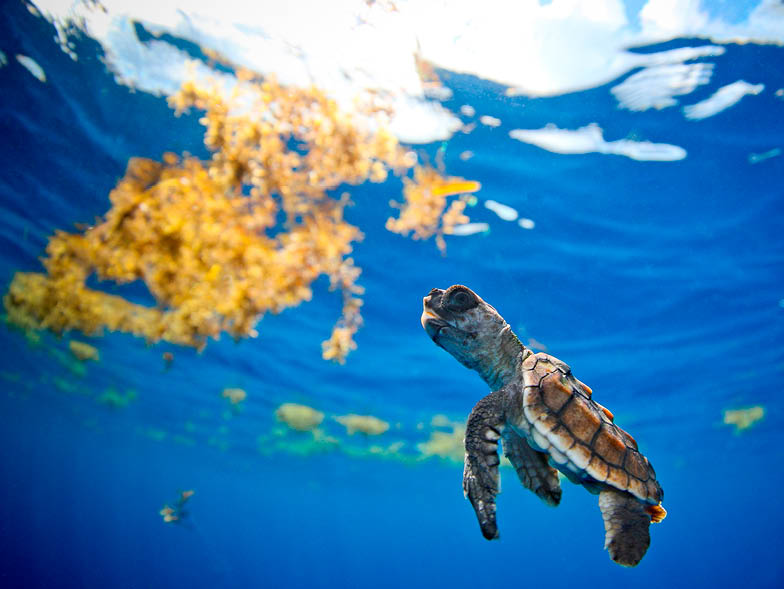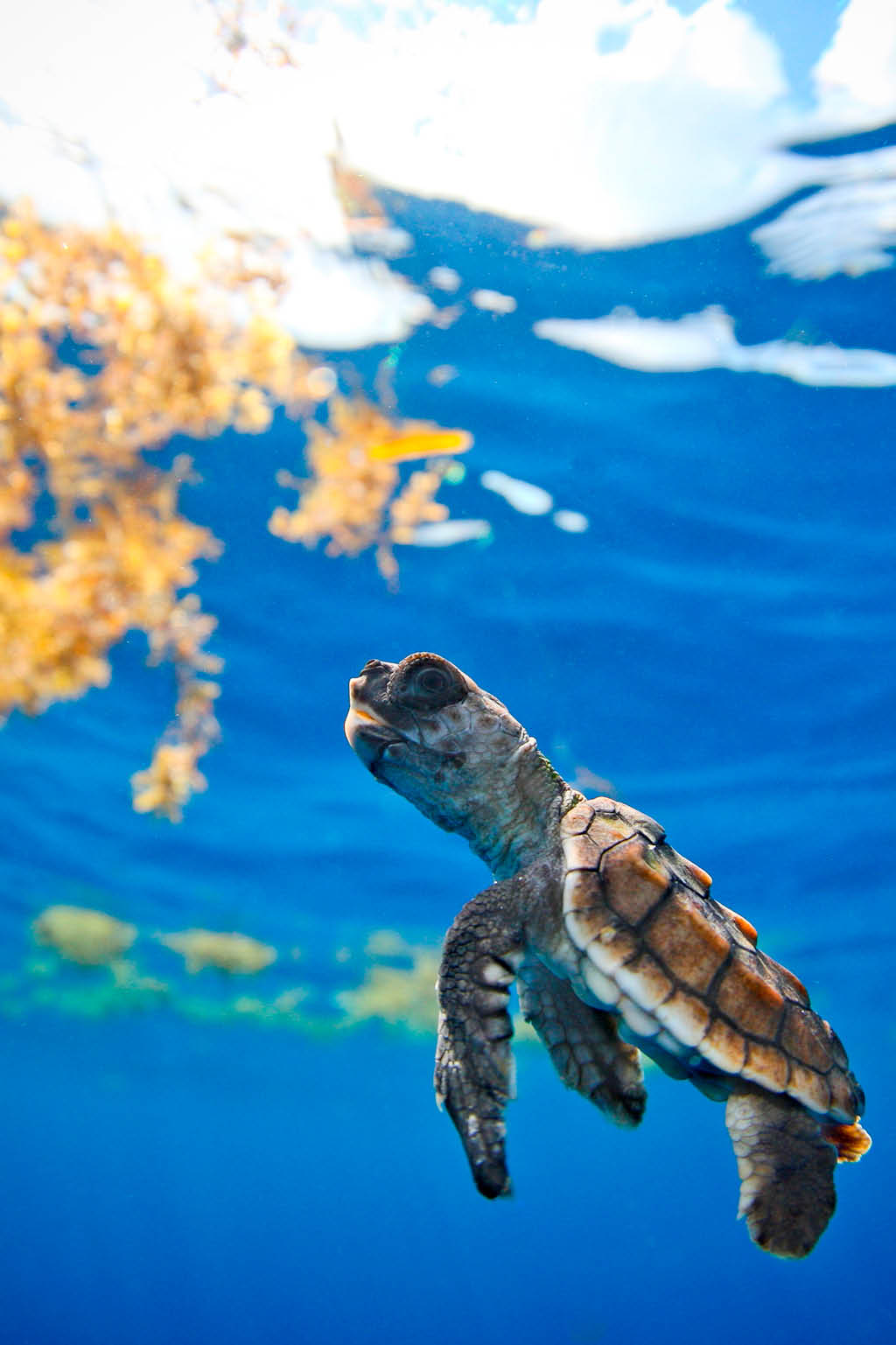One Shell of a Cause
In late 2008, a crowd gathered at a small section of beach along the central east coast of Florida. This stretch of beach has drawn crowds every year at this time for over a decade—but not for any reasons you might think.
Melbourne Beach, Florida, is home to the Archie Carr National Wildlife Refuge, which works with the Sea Turtle Conservancy, a research and education center with a mission to study and protect global sea turtle populations. The reason for the crowds is the annual release of dozens of loggerhead, leatherback, green, and hawksbill turtles through the organization’s Tour de Turtles program.
The Tour de Turtles, which first took place in 2008, is part of a long history of programs through which the Sea Turtle Conservancy raises awareness for the plight of sea turtles. Such efforts have helped to make the organization the most successful sea turtle protection agency in the world.

Dr. Archie Carr
The organization may never have been founded, though, if it weren’t for the research of one man, Dr. Archie Carr, and his 1956 book, The Windward Road. Working as a publisher, Sea Turtle Conservancy founder Joshua B. Powers was so influenced by Carr’s research that he decided to form an organization to promote the doctor’s work with sea turtles.
The group held its first meeting in New York City in December 1959—a gathering Powers dubbed the Brotherhood of the Green Turtle. Comprised of influential publishers, members of government, and Dr. Carr, the group agreed to provide financial support to assist Carr in his mission.
Carr served as the scientific director of the organization for nearly three decades, and, through research he conducted in Costa Rica and the Caribbean, he helped bring about numerous policy changes to help ensure turtle populations were protected. “At that time, some fifty years ago, environmental factors were not as much of a concern, but people killing and eating turtles was the biggest threat,” says Sea Turtle Conservancy communications coordinator Lexie Beach. “Turtles were an international delicacy, and they were being harvested not only in Latin America but also in Florida.”
Much has changed for the global turtle population since the conservancy’s founding, and, although the consumption of turtles is mostly a thing of the past, the other dangers posed to these animals have remained constant.

The Sea Turtle’s Modern Threat
Like many other coastal-dwelling species, turtles have faced dramatic environmental threats in recent years—particularly from commercial fishing, pollution, and warming ocean temperatures, all of which damage their natural habitats.
For decades, the Sea Turtle Conservancy has been releasing turtles and tracking their migratory patterns from stations in Costa Rica and Florida, hoping to better understand the behaviors, feeding, and nesting patterns of these creatures. The organization also has research centers in Bermuda, Panama, and St. Kitts and Nevis. The telemetry tracking that it uses—a small, automated satellite tracker attached to the turtle’s shell—has helped better protect particularly sensitive nesting grounds and identified areas where commercial fishing is the greatest threat, among other important work.
According to Beach, turtles are a great marker for the health of the global coastal environments because of their wide range of travel in all but one of the seven oceans. “They can tell us so much about the beach, dune system, and marine environment as a whole,” she says. “One of the examples we use a lot is that green sea turtles are one of a few animals that eat sea grass as part of their diet. Because sea grass needs to be cut short for it to grow, the turtles act as a kind of lawnmower, which allows shellfish and other crustaceans to thrive. And, unfortunately, sea grass environments have really struggled in recent years.”
Educating the public about the most critically endangered species, like the hawksbill turtle, is as equally important as preservation and research programs. In addition to the Tour de Turtles program, which offers teachers across the country learning materials and the ability to follow the turtle tracking as a classroom project, the conservancy provides a number of resources for educators worldwide to learn directly from the experts.

“Education is a huge part of what we do, especially in Florida because it’s one of the only places we aren’t monitoring nests every day,” says Beach. “But we are able to offer free education materials, programs, and presentations to anyone who’s interested. It’s always exciting when we get contacted by a school in Maryland or Michigan, for example, where there aren’t active populations of sea turtles and yet they are still excited to learn about the turtles.”
“Most of our programs focus on kids and raising the next generation of conservationists,” she says. “We also offer these programs in Spanish to children in Costa Rica and Panama to raise awareness in indigenous communities where they see and interact with these turtles all the time.”
While the majority of Floridians are already knowledgeable about sea turtle protection, the organization has made the education of tourists a top priority, too. Beach says that the interest in sea turtles makes the Sea Turtle Conservancy’s public programs and attractions popular, but the attractiveness of Florida beaches also makes for a degraded coastal environment and an increased threat to turtle habitats.
The organization provides educational pamphlets to beachfront hotels and properties with the dos and don’ts of sea turtle nesting season, as well as information on what to do if you come across a turtle in distress. But perhaps the biggest threat beachfront hotels pose to sea turtles is the amount of light emitted from the buildings at night—prime time for sea turtle hatchlings to make their way to the ocean. Baby sea turtles are naturally programmed to follow the brightest light out of their nests, which typically comes from the moon. But because of the brightness of the hotel lights, they’ll sometimes become disoriented and are left unable to find their way.
Since 2010, the Sea Turtle Conservancy has been working with the National Fish and Wildlife Foundation to retrofit lighting in Florida’s many beachfront properties, as well as enhancing and restoring dune formations, which provides a healthier environment for sea turtles to nest.

The Problem With Plastics
The matter extends far past the beaches of Florida, Costa Rica, and the Caribbean, and Beach stresses the importance of everyday actions people living thousands of miles away need to be taking. “For people who don’t live somewhere native to sea turtles, one of the biggest ways to help is focusing on the amount of plastics you’re using,” she says. “Even if you don’t live anywhere near the ocean, so much of the plastic you throw away will end up there—through storm drains, into rivers, and eventually, into the sea.”
The conservancy recently launched a campaign aimed specifically at reducing the use of straws, which have become a huge problem for sea turtles that may accidentally consume the plastic. The organization pinpoints a 2015 viral video of a research group discovering an olive ridley sea turtle with a straw stuck in its nose as a major marker for awareness of this growing threat and a call to action. “Unless people start to make a change, there’s nothing to stop the threat from growing,” says Beach.
Sea turtles are one of the oldest living species of ocean dwellers in existence today, but despite the Sea Turtle Conservancy’s tenacity, its work is still very much needed in order to protect them from the threat of extinction. Through more than sixty years of research and education, the organization has brought the challenges they face to the surface, shaping an era of critical curiosity for one of the ocean’s most gentle creatures.
For more info, visit conserveturtles.org





















